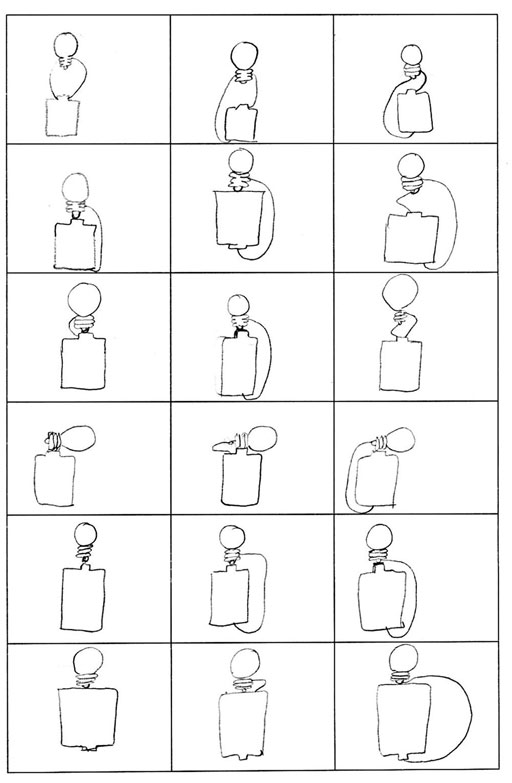Resource 3: Instructions for the games described in this unit
Game 1: Will the bulb light?
Before playing:
To play this game you need to copy or do similar drawings to those given in Figure R3.1. You will need at least one set of cards per group of three students. If you use two sets of cards per group you could have four or five students playing at once.
Cut out each card, making sure they are the same size. Keep each set separately in a dry box or bag until you need them.
To play:
The group finds a place to play and one person spreads out all the cards face down. Each person takes a turn to turn over a card and look to see if it is a card that shows that the bulb will light. If the student decides that they think it does light he or she keeps the card. The next person then has a turn, and this goes on until they are sure there are no complete circuit cards left. They count up the number of cards each one has and the student with the most cards is a winner.
When they first play, students may not be as able to decide if they have turned up all the complete circuits so you should check their answers and encourage them to become more adept at identifying those bulbs that will light.
Game 2: Making a circuit
Before playing:
Make copies of Figure R3.2 – you will need at least three sets per group – and ask your class to cut out the cards, or you can fold them and tear carefully. If you do not have access to a copier you could get your students to draw the diagrams onto a piece of paper and then cut them out.

To play:
Divide your class into groups or teams and number them. Next give each group the same number of bulbs, batteries and wires. Each group needs twice as many wires as they do the other items.
You can play this game in two ways:
- You ask each group or team to make a complete circuit with two wires, one bulb and one battery. The first group to finish gets a point. You record the points on the board.
- You could ask one person in each group to make a circuit that you call out. The first student to finish and get it right is given a point for the team. You carry on playing until everyone has had a turn. You could go round the groups twice if you think they need more practice.
Some possible circuits students could make:
- one bulb, one cell, one wire
- one bulb, one cell, two wires
- one bulb, one cell and three wires
- one bulb, one cell and four wires
- one bulb, two cells, two wires
- one bulb, two cells, three wires
- one bulb, one cell, four wires
As your students become more competent you can call out more complex circuits, such as two bulbs, one battery, two wires and each time vary the amount of each item. When you do these more complex circuits you can ask students questions about what effect more or fewer bulbs, batteries or wires would have.
You could also ask them what kind of light they might get if, for instance, they had one cell and several bulbs but only a few wires. This way you can explore their growing understanding.
If you can demonstrate with real cells and light bulbs, some of the effects of varying the circuit structure will help them to link the cards with the reality of lighting bulbs.
Resource 2: Set of simple circuit cards

